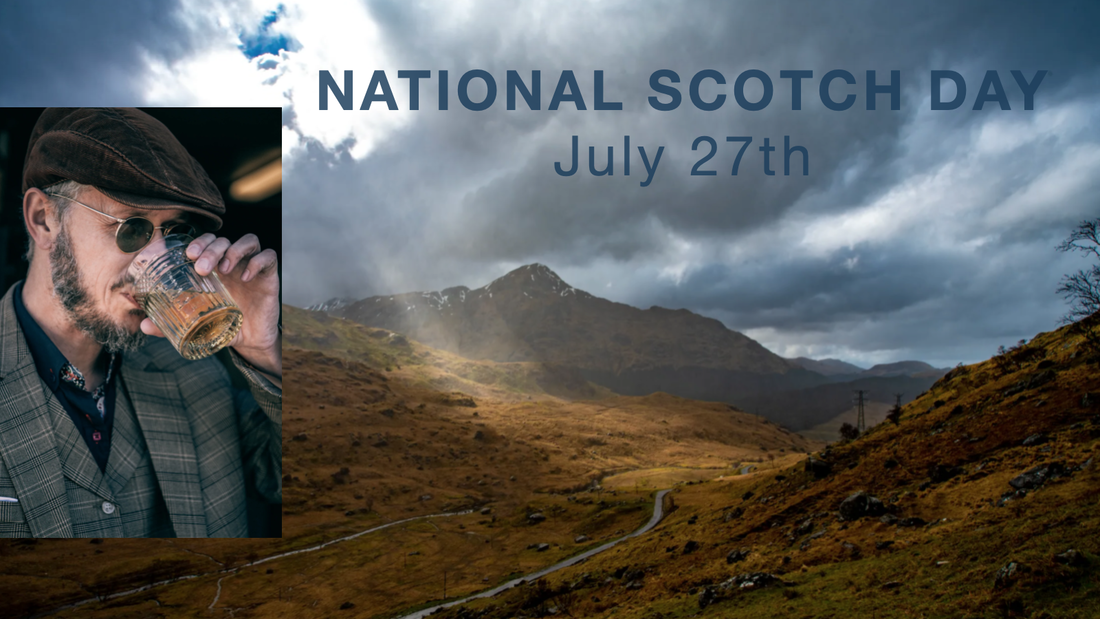|
“Angel’s Share”, is what distilleries call the portion (share) of a whisky’s volume that is lost to evaporation during aging in oak barrels.
In case you forgot to mark it on your calendar, today, Saturday, July 27 is National Scotch Day, and in 2019 it falls on the 525th anniversary of that fateful day in 1494 when Scotland’s whiskies were first taxed. Today there are more than 350 distilleries barrel aging and bottling what has become one of the most drinkable and collectable of all distilled spirits. In order to be considered scotch, this classy and distinctive spirit must be made in Scotland. It must be fermented from malted barley, aged in oak barrels for at least three years and have an ABV or alcohol content of less than 94.8%. While most scotch is made with barley, water and yeast; other grains can be included. All fermentation additives are excluded, per law. There are five distinct classifications of Scotch whisky including single malt scotch, single grain scotch, blended malt scotch, blended grain scotch and blended scotch. Scotch is often identified by the region where it was produced and each region has its own characteristics that influence taste. Despite scotch being made in Scotland, you can enjoy the spirit anywhere. Kilt not required. Balvenie Stories Collection Speyburn 18 Year Old Single Malt Dewar’s Double Double Glenmorangie Refreshed Extra Matured Range Ardbeg Drum The History Scotch Whisky Day The Babylonians of Mesopotamia were likely the first people to distill alcohol in 2nd millennium BC. The earliest records of the distillation of alcohol for the purpose of drinking date back to 13th century Italy, where harder alcohols were distilled from wine. Soon, the practice of distillation use spread through medieval monasteries and was used largely for medicinal purposes, such as the treatment of smallpox and other illnesses. Distillation spread to today’s Great Britain in the 15th century, and the first evidence of whisky production in Scotland comes from an entry in the Exchequer Rolls for 1494 where malt is sent “To Friar John Cor, by order of the king, to make aquavitae”, enough to make about 500 bottles. Whisky production later moved out of a monastic setting and into personal homes and farms when King Henry VIII of England dissolved all the monasteries in his country due to his feud with the Pope, causing the monks to find a way to earn a living for themselves. However, the distillation process in those days was much more basic than it is today, and the whisky itself was not allowed to age, meaning it must have tasted much more raw than it does today. How to celebrate Scotch Whisky Day There are hundreds of distilleries in Scotland you have likely never heard of that make whisky better than you’ve ever tried before, and this day is the day to experience them. Rocquefort cheese go well with whiskey, as does dark chocholate and for a little more substantial slow roasted pork ribs is also a perfect match. Why not watch a movie that carries the theme as well? There are also quite a few films to choose from that would be perfect for this day, one to recommend is "The Angel’s Share", an acclaimed Scottish comedy-drama about a man trying to get his life back on track after narrowly avoiding a prison sentence. Cheers!
0 Comments
|
AuthorLene H. Minyard Archives
September 2023
Categories |
Copyright Perfectly Planned Journeys, LLC™ 2021


 RSS Feed
RSS Feed





